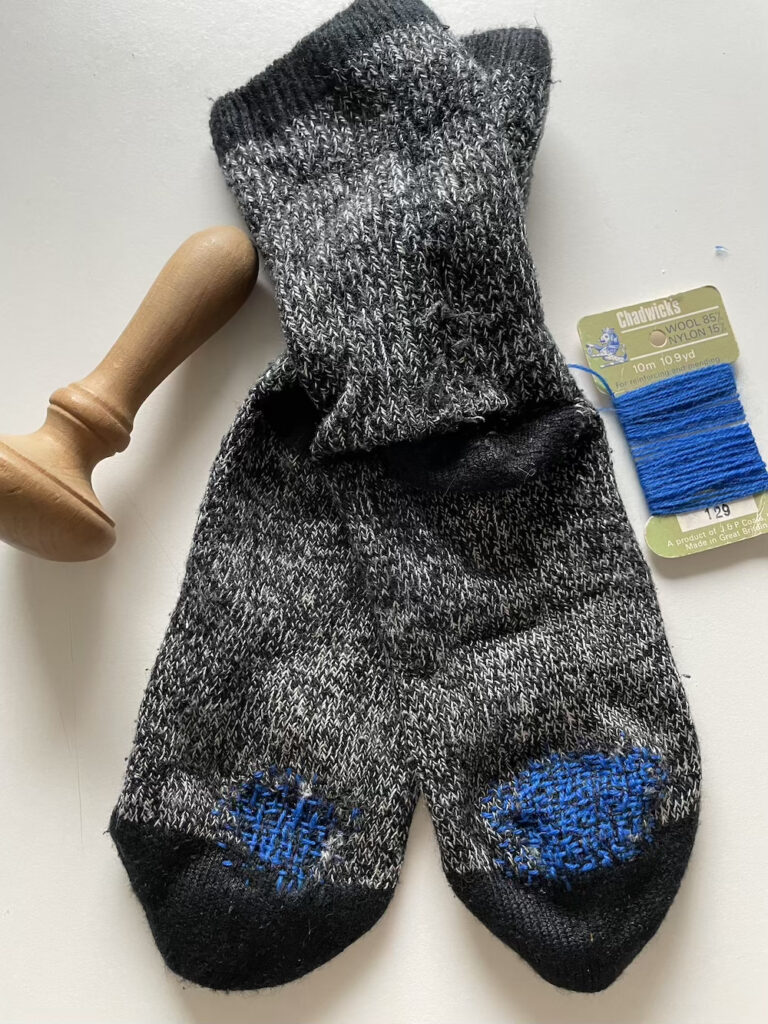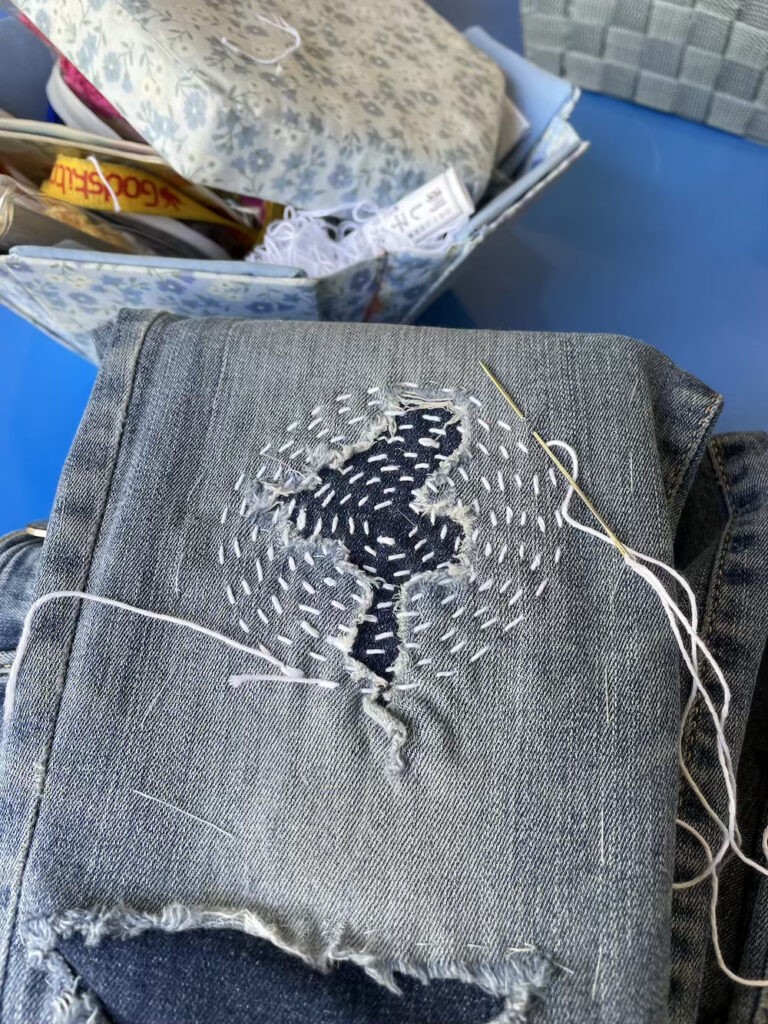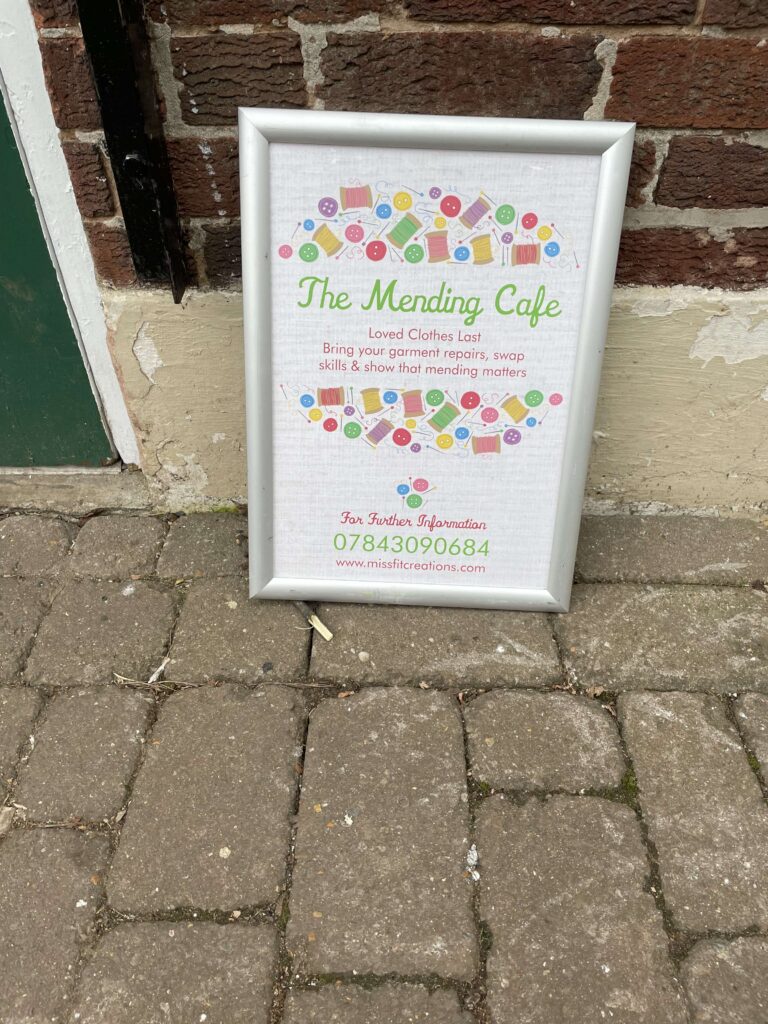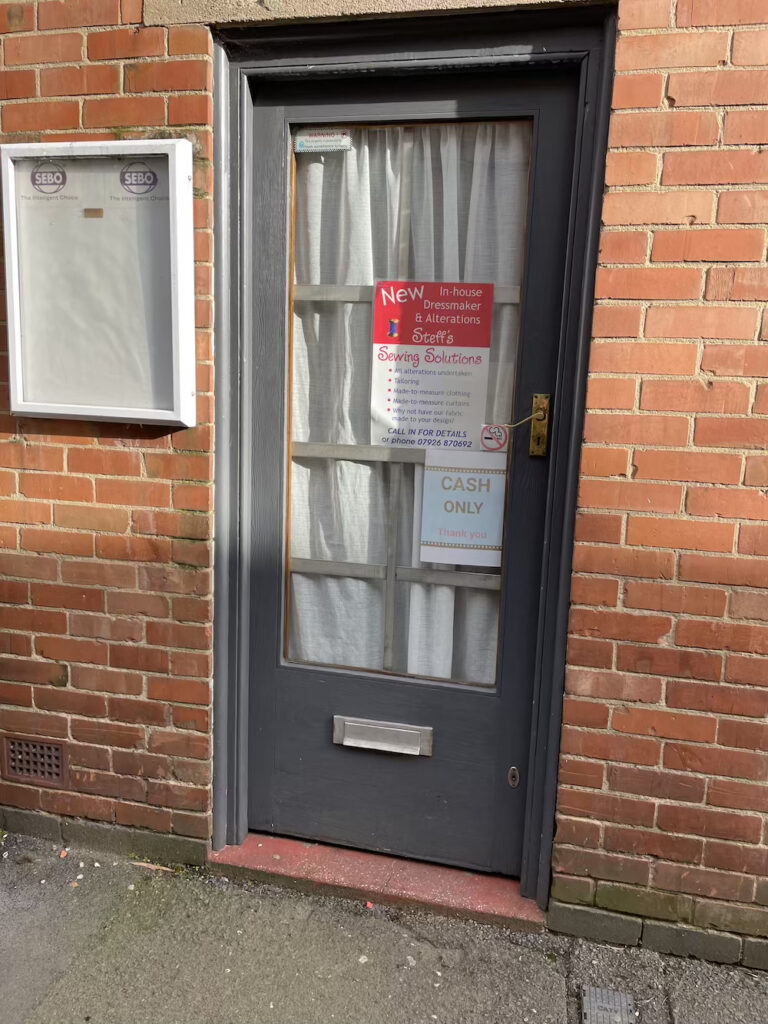
According to WRAP (2012), around 166 million items of clothing could be worn again if they were repaired yet nearly 350,000 tonnes of clothing were discarded as residual waste in 2021. If more clothing were to be repaired around 13.9 kg of carbon emissions per garment would be saved (Bevilacqua et al., 2011) which could help in our fight against climate change. A solution to such waste is the concept of ‘circular fashion’ (Ellen MacArthur Foundation, 2020; Gazzola et al., 2020) where resources are maintained for as long as possible through cycles of use and reuse (Earley and Goldsworthy, 2015). Within the Circular Economy (CE) model, waste is turned into a valuable resource and as such repair, as part of a reduce and reuse strategy, is key within the waste hierarchy of that model.
Mending is a task that many people associate with the past and indeed some I spoke to about my research on the subject declared that ‘nobody does it anymore’. Some scholars in the field (Fisher et al., 2008; Gwilt, 2014)also claim that mending has disappeared. Yet I have found contrary to this, that mending is occurring but is hidden in many ways in both practice and concept.
Historically, repair would have been done to clothing in an invisible manner to avoid the stigma associated with poverty (Gwilt, 2014) particularly if the piece was valuable. In European society respectability, decency and social standing were maintained through appearances which hidden and inconspicuous garment mending enabled (Burman, 1999).
“I don’t ever see the point to invisible mending” Celia Pym – Mending Artist
Over time the type of methods used to mend clothing has changed from invisible ones that were highly skilled and time-consuming to visible mending that is more expressive and creative rising in prominence. This reflects the needs behind repairing garments from one of economic necessity to one of the leisure of hobby craft (Laitala and Klepp, 2018).

Most mending is done at home, out of sight of the public gaze (Fletcher, 2018; Towers, 2020) and is therefore not often seen or discussed in our everyday lives. A mending task will also go unnoticed by family members as mothers often mend for their children unbeknownst to them like a magic fairy. If we could see others around us sewing and mending either in our homes or at school it would bring it into our orbit and remind us that it is possible.
“So she must have done mending. But it wasn’t that obvious to me”
Garments that are broken or damaged and in need of mending are often hidden away in our wardrobes, waiting to be fixed and brought out into the open again. However, some people are not even aware mending can be done, meaning the practice is completely invisible to them. This could be a symptom of the reduction of sewing in schools (Norum, 2013) alongside it falling out of common practice (Gwilt, 2014). The ‘closed’ feel of modern clothing (Fletcher, 2008) could hide the possibility of mending from the uninitiated. To add to this, those that claimed not to mend did in fact sew on buttons or do darning which meant these basic mending skills were going under the radar and may not have been uncovered in earlier surveys and research.
We found that in charity shops we visited the volunteers fixed minor repairs such as sewing buttons or fixing hems. The manager of a pre-loved dress agency also told us that she mends her stock before it goes out on the shop floor. This suggests many more people are mending than anyone realises, but they are hidden away and go unrecognised. How many other such hidden heroes of mending are there?
Mending Groups

Repair cafes have grown in popularity since their inception in 2009 in Holland. However, many people seem to still be unaware of them and don’t know that some provide garment mending alongside electrical repairs. Even some volunteer fixers were unaware of other repair cafes in the area.
I discovered various other small mending groups in my area but they were hard to find. Many do the best they can using social media posts to advertise their events but I came upon them often by chance even though I was searching for them. These groups do have difficulty reaching people due to this and so are often only attended by those in the know or their friends.
Professional Repair

This inconspicuous nature of repair was also evident in my walking tour and investigation of the local garment-mending ecosystems where repair shops were off the main thoroughfares and not well advertised. These tucked-away locations are most likely due to high rents and rates on the high street pushing small businesses further away. This has a knock-on effect on the visibility of mending and repair as a practice.
The highly skilled repair professionals are throwbacks to when they would have been on every high street. Although many such repair services have now gone, the people and their skills are still around but have become more hidden as other businesses and occupations proliferated in their stead (von Busch and Williams, 2011).
This problem was noticed by Leila Sargent the CEO of The Seam who stated:
“A lot of the makers that we are working with have much more traditional, kind of brick-and-mortar set-ups with sometimes minimal to no online presence”
Many people I spoke to did not know all the professional repair services in their local area and even some of those who organised mending events were unaware of other events or repairers. This shows that even those embedded in local communities and with an interest in the subject are not always aware of similar things happening around them.
Bennett (2012) suggests that localised repair provision may be more effective than centralised ‘hidden’ systems. It would speed up turnaround times, provide a customer-facing element and establish community ties and relationships between brands or providers with the public. Bringing mending and repair practices out into the open would allow them to be seen by many and accepted as normal and valued processes (Zhang and Hale, 2022).
Written by Ismay Mummery, 2nd Year Postgraduate Researcher
References
Bennett, M., 2012. Fix, Darn, Mend: An Interpretation of Clothing Repair in the Context of Sustainability. [M.S.] University of California, Davis. Available at: <https://www.proquest.com/docview/1236113862/abstract/EDF6C81F097C4816PQ/1> [Accessed 8 December 2022].
Burman, B., 1999. The culture of sewing : gender, consumption and home dressmaking. [online] Available at: <https://www-bloomsburyfashioncentral-com.libezproxy.open.ac.uk/encyclopedia?docid=b-9781847888884>.
von Busch, O. and Williams, D., 2011. Community Repair Project: Strategic Social Skill Mobilization For Sustainable Fashion. [online] University Of The Arts London. Available at: <https://core.ac.uk/display/30434532> [Accessed 24 October 2022].
Fisher, T., Cooper, T., Woodward, S., Hiller, A. and Goworek, H., 2008. Public Understanding of Sustainable Clothing: Report to the Department for Environment, Food and Rural Affairs.
Fletcher, K., 2008. Sustainable Fashion and Textiles. [online] Earthscan. Available at: <https://www-theacademiclibrary-com.libezproxy.open.ac.uk/title_display.cfm?CFID=1646549&CFTOKEN=38763719&jsessionid=be305fd651f26091c45a4a745396c7b68292> [Accessed 10 January 2023].
Fletcher, K., 2018. The Fashion Land Ethic: Localism, Clothing Activity, and Macclesfield. Fashion Practice, [online] 10(2), pp.139–159. https://doi.org/10.1080/17569370.2018.1458495.
Gwilt, A., 2014. What Prevents People Repairing Clothes? An investigation into community-based approaches to sustainable product service systems for clothing repair. Making Futures Journal, [online] 3. Available at: <https://www.academia.edu/7157473/What_Prevents_People_Repairing_Clothes_An_investigation_into_community_based_approaches_to_sustainable_product_service_systems_for_clothing_repair> [Accessed 18 October 2022].
Laitala, K. and Klepp, I.G., 2018. Care and Production of Clothing in Norwegian Homes: Environmental Implications of Mending and Making Practices. Sustainability, [online] 10(8), p.2899. https://doi.org/10.3390/su10082899.
Norum, P.S., 2013. Examination of Apparel Maintenance Skills and Practices: Implications for Sustainable Clothing Consumption. Family and Consumer Sciences Research Journal, [online] 42(2), pp.124–137. https://doi.org/10.1111/fcsr.12047.
Towers, E., 2020. The Practice of Mending Caring-through-use: A Strategy for Clothing Longevity. [online] University of The Arts London. Available at: <https://ualresearchonline.arts.ac.uk/id/eprint/16225/>.
Zhang, L. and Hale, J., 2022. Extending the Lifetime of Clothing through Repair and Repurpose: An Investigation of Barriers and Enablers in UK Citizens. Sustainability, [online] 14(17), p.10821. https://doi.org/10.3390/su141710821.

Leave a Reply